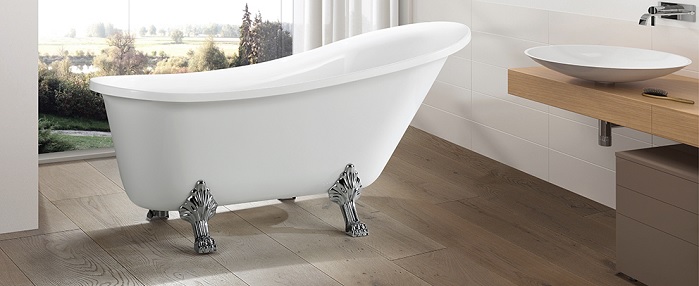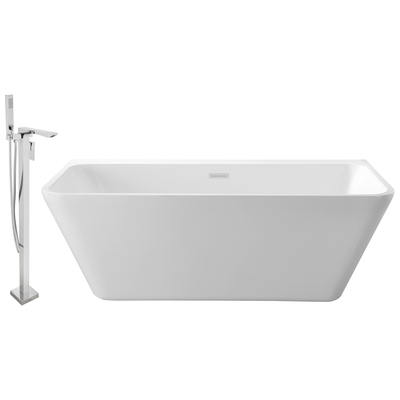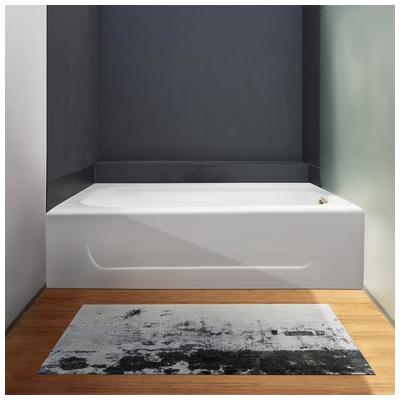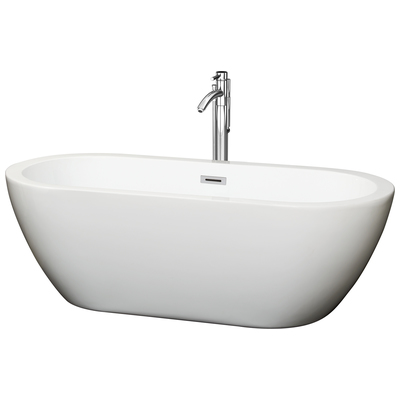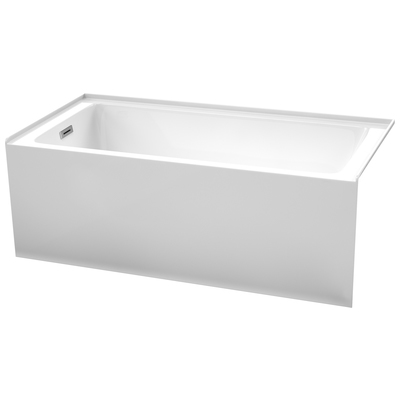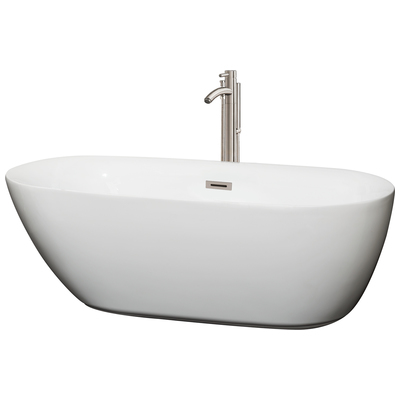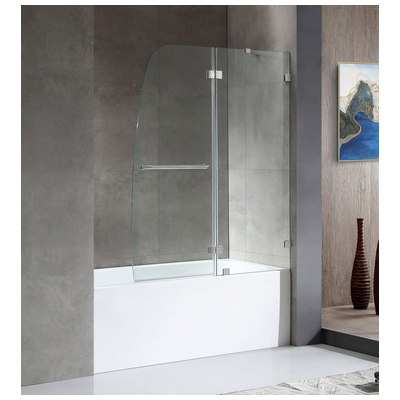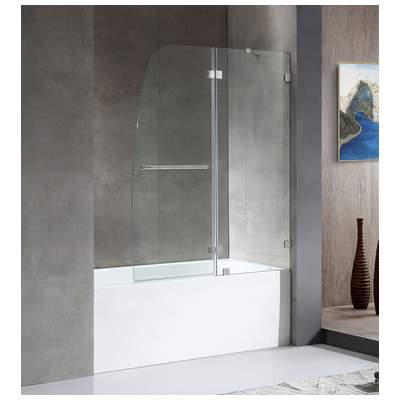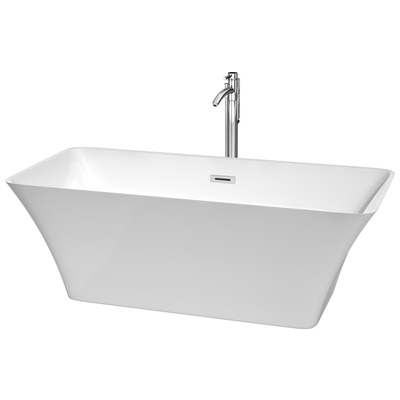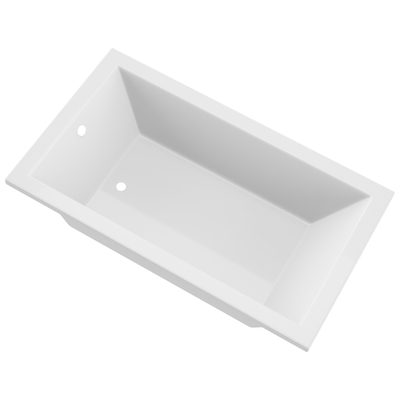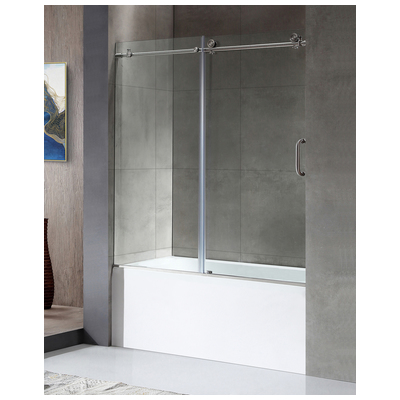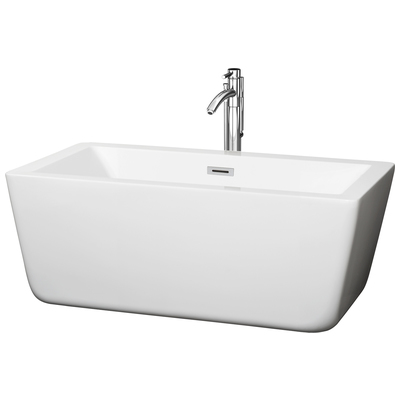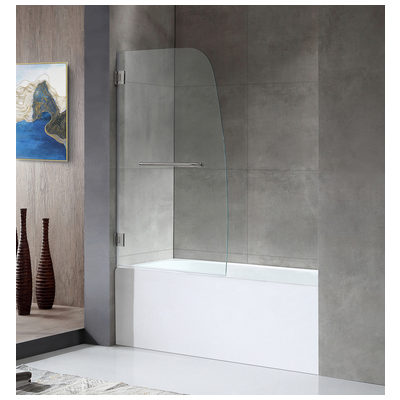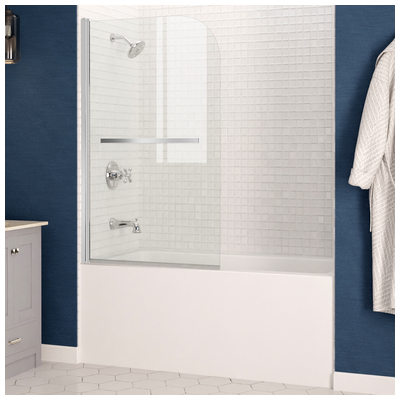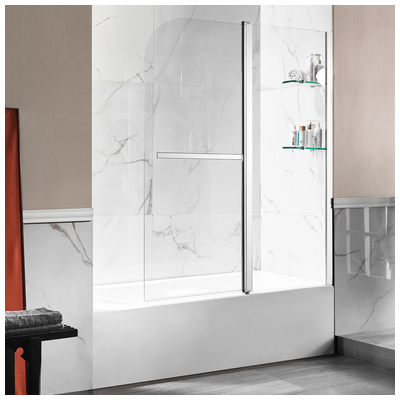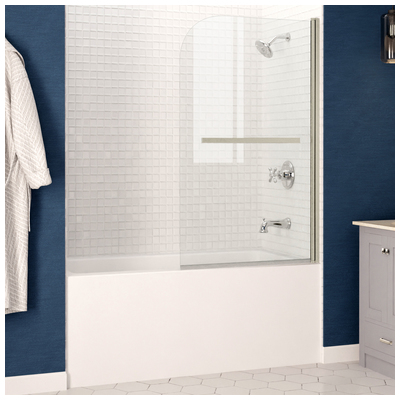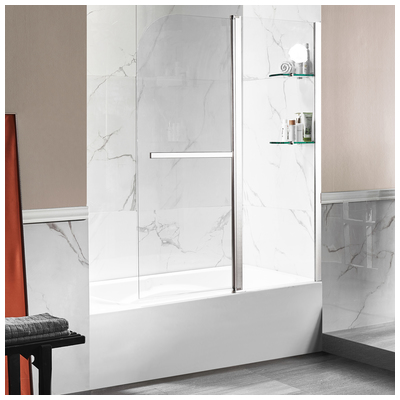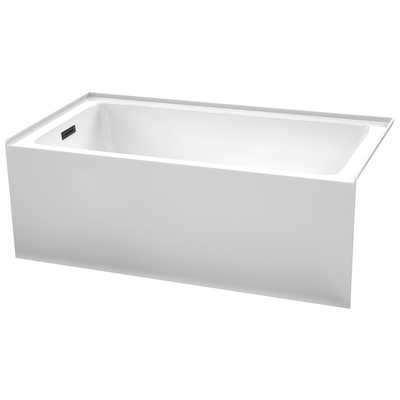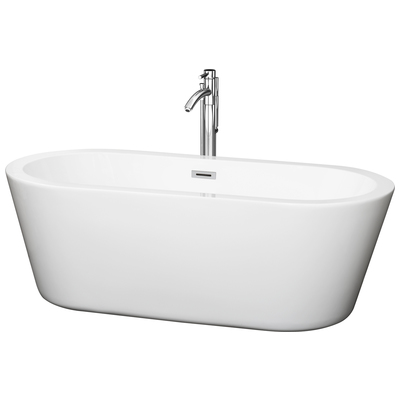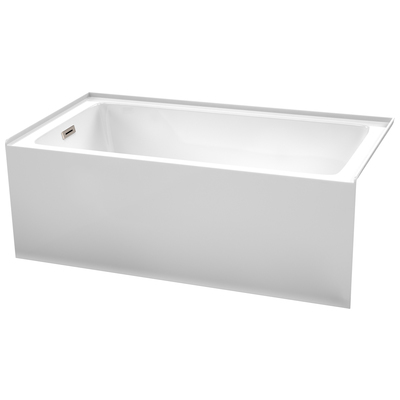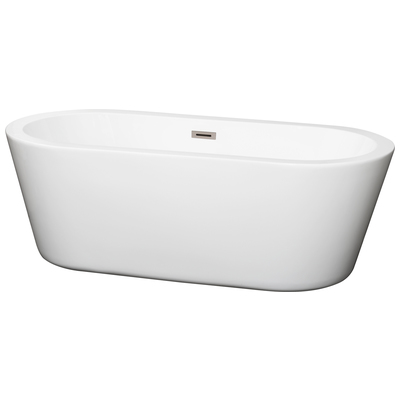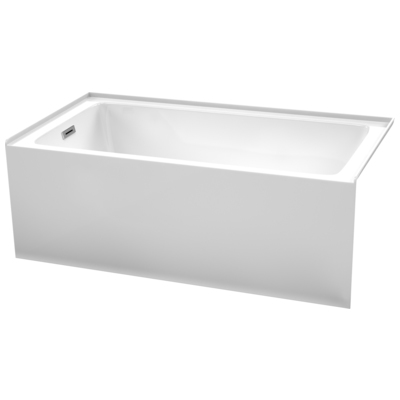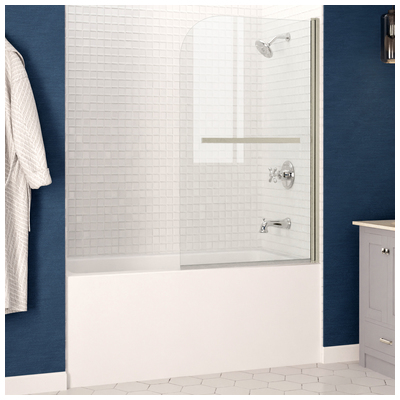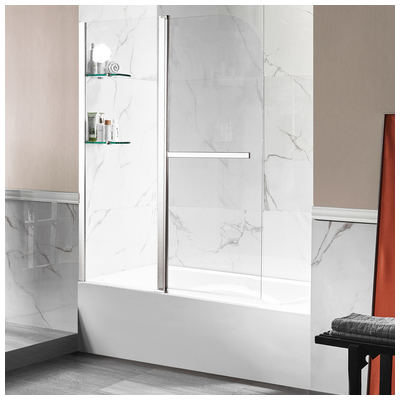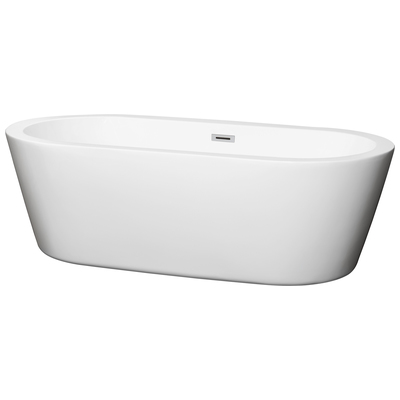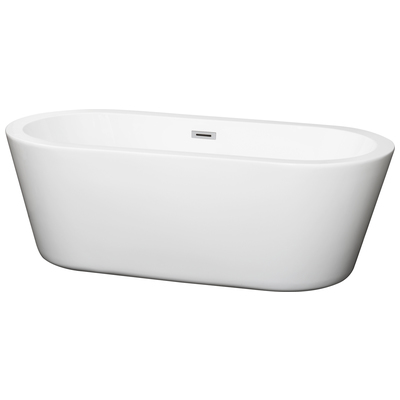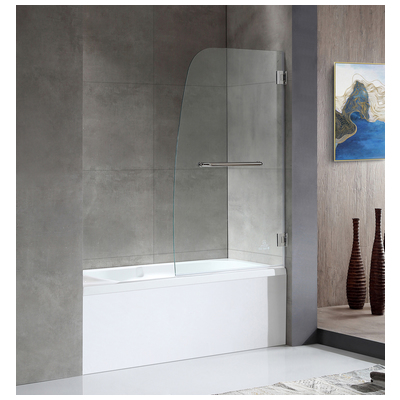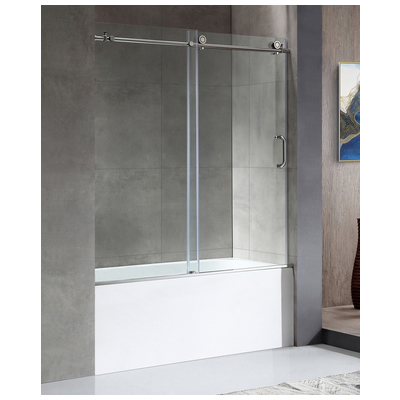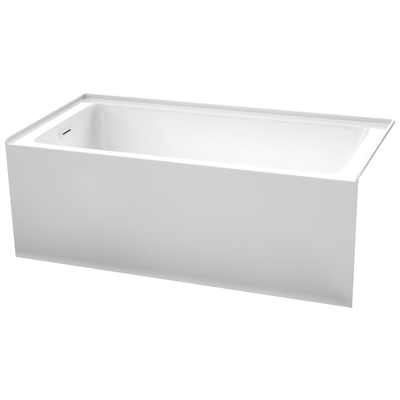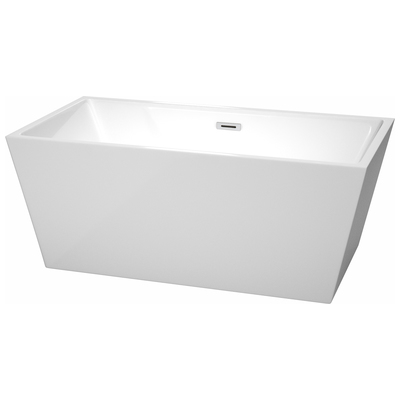There are two kinds of people in the world: those that include big, luxurious soaking bathtubs or whirlpools in their bathroom remodel because they feel like they have to, and those that do so because they really really want to. But whether you’re approaching the purchase of a big bathtub out of a sense of obligation or enthusiasm, there are a few important measures and markers that you should keep in mind. Knowing what to look for will ensure you’ll get a bathtub that you’ll love to use – or, at the very least, that won’t work against you in terms of resale value later.
Length
Shop Freestanding Clawfoot Tubs:
When you’re talking about upgrading to a luxury bathtub, you’re almost definitely talking about a boost in length. This may not be true 100% of the time, but it’s pretty darn close. The reason is that stretching out and sinking down into the tub is a key part of the luxury soaking experience. That said, unless you’re pretty tiny, even the longest tubs aren’t big enough for you to lie flat in them. So while a 72″ beauty might sound like a dream, if you don’t have a lot of space, it might be worth sizing down a little. How? Look for a bathtub with a back that has a comfortable slope to it, and a fairly generous overflow drain (more on that in a moment).
Height
Shop Soaking Tubs:
The height of your bathtub is the simplest measurement that you should be aware of, and one that should be listed clearly on every bathtub. That said, it isn’t always the first measurement you think of; height isn’t as impressive as length, and isn’t always a good indicator of what your bathing experience will be like. Knowing the total height of the tub walls is an accessibility issue than anything else. The taller the tub, the more difficult it will be to get in and out of, especially as you grow older. Clawfoot tubs add height without adding depth, which makes them a poor choice for an age-in-place remodel. For tall tubs of any style, it can be worth installing an extra step up or grab bar to help you get in and out. And if you have or are concerned about mobility issues, consider a walk-in bathtub.
Depth
Shop Freestanding Tubs by Venzi:
The most important measurement for determining how much you’ll be able to submerge yourself in the tub, though, is the depth. Specifically, the difference between the exterior height of the tub and the interior height. On a clawfoot tub or pedestal tub, the difference is obvious: the feet raise up the bathtub so the inside doesn’t even touch the floor. But it’s easier to overlook on simple, floor-mounted fiberglass or acrylic bathtubs, which have a hidden gap between the bottom of the tub and the floor. That means that a bathtub with an apron height of 18″ might have an interior depth of only 13″. On a very large bathtub, these few inches might not make much difference. But on shallow bathtubs, it can add up to a tub that won’t be able to cover your body with water, even when filled all the way up to the overflow.
Overflow Drain
Shop Soaking Tubs by Venzi:
And the overflow valve? Adds another level of complication to determining the depth of your tub. While many of the measurements of a tub are fairly straightforward, the inside depth of the tub can actually be a little misleading. Why? Because you can almost never actually fill a bathtub all the way up to the rim. Nearly all tubs have overflow protection – usually a circular metal piece on the side of the tub that steadily drains water from the tub once it reaches a certain level, to prevent it from overflowing. Knowing the height of this secondary drain is absolutely crucial, as it will mark how deep the water in your bathtub will actually be, regardless of the inside height of the tub. A very high overflow drain can make even a short, shallow bathtub a better choice than a huge one you can’t fill to the same level.
Capacity
The listed water capacity of a bathtub can also be misleading. It’s difficult to picture 70 or 80 gallons of water, and it’ll look different depending on the length and width of the bathtub. Worse, the capacity of your tub does NOT correlate one to one with the size of your water heater. You might think, 50 gallon tank, 50 gallon tub, right? But the result is, at best, a lukewarm bath. While the water heater is filling your tub, it’s also refilling with cold water – meaning the temperature of the water drops the longer it’s running. Many retailers will neglect to mention this, because replacing your water heater will take the whole project to an entirely different level. But if you want to ensure you can fill your tub with piping hot water, make sure your water heater can handle the increased demand.
Weight
Last but certainly not least, if you’re planning on buying a new luxury soaking tub, you really want to know how much it weighs. And I don’t just mean the weight of the tub itself; you also need to know how much it weighs when it’s as full of water as it can get, plus the weight of whoever will be using it. This is especially important if the tub is made of cast iron. Why? Because water is heavy, and cast iron is heavy, and the two together can spell disaster if your floor isn’t up to bearing their combined weight. This is mostly an issue for bathrooms on upper levels; but if you’re putting the bathtub anywhere but on a solid foundation, make sure to have a chat with your contractor about whether or not your floor can handle your dream tub.
With so many different bathtubs to choose from, it can be easy to fall for a tub based on appearance or superficial measurements alone. But paying closer attention to specific measurements will help you choose a tub you’ll love, and save you from unpleasant surprises – like a too-shallow tub or too-small water heater!

